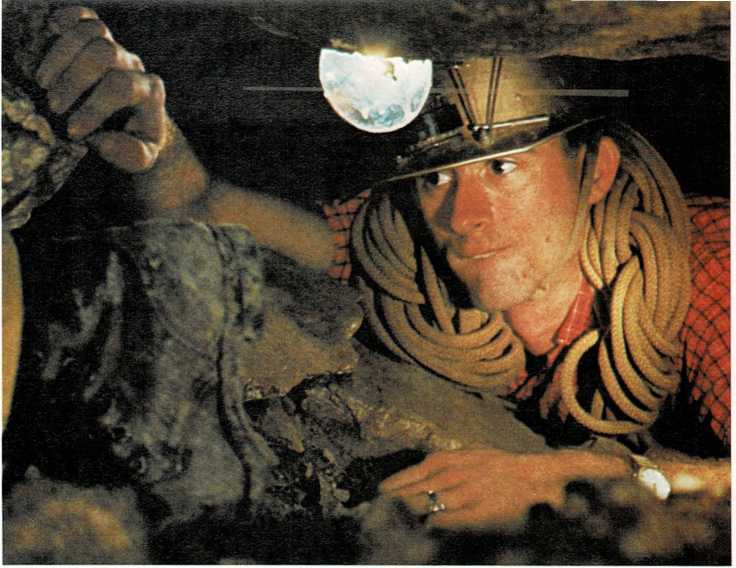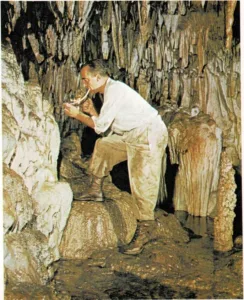
Cave scientists
Watch your head—there’s a stalactite! Oops, don’t trip over the
stalagmite! Where are you? In a cave!
Scientists who study caves are called speleologists. Most caves are
dark, slippery tunnels of rock and water. Exploring them can be
dangerous. So speleologists wear protective clothing and headlamps. And
they carry rope and other tools. These scientists want to find out about
the changes a cave goes through. They also want to know how long each
change lasts and what happens to a cave during this time.
Some caves are like underground art museums. The limestone formations
look like beautiful sculptures. And man’s earliest art—painted more
than twenty-five thousand years ago—has been found on cave walls.
Where is the deepest cave? No one knows. But in a cave in France,
explorers climbed down almost three thousand feet (910 meters).
People Who Study the World and Space \| 311
cave scientists at work
A group of cave explorers (left) crawl through a narrow underground
tunnel. A scientist (below) makes tests in a limestone cave in Mexico.


